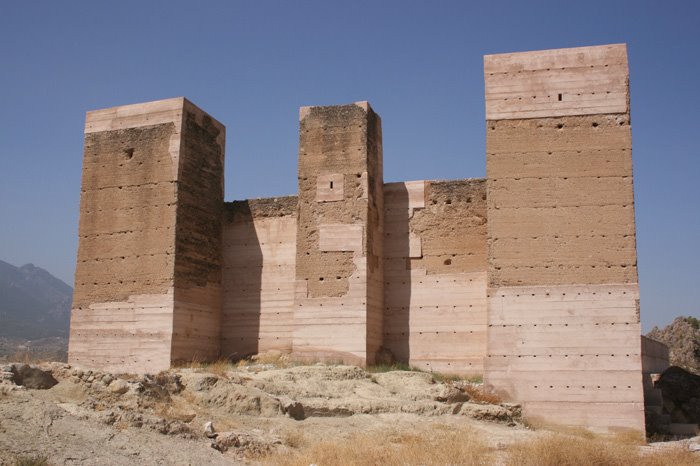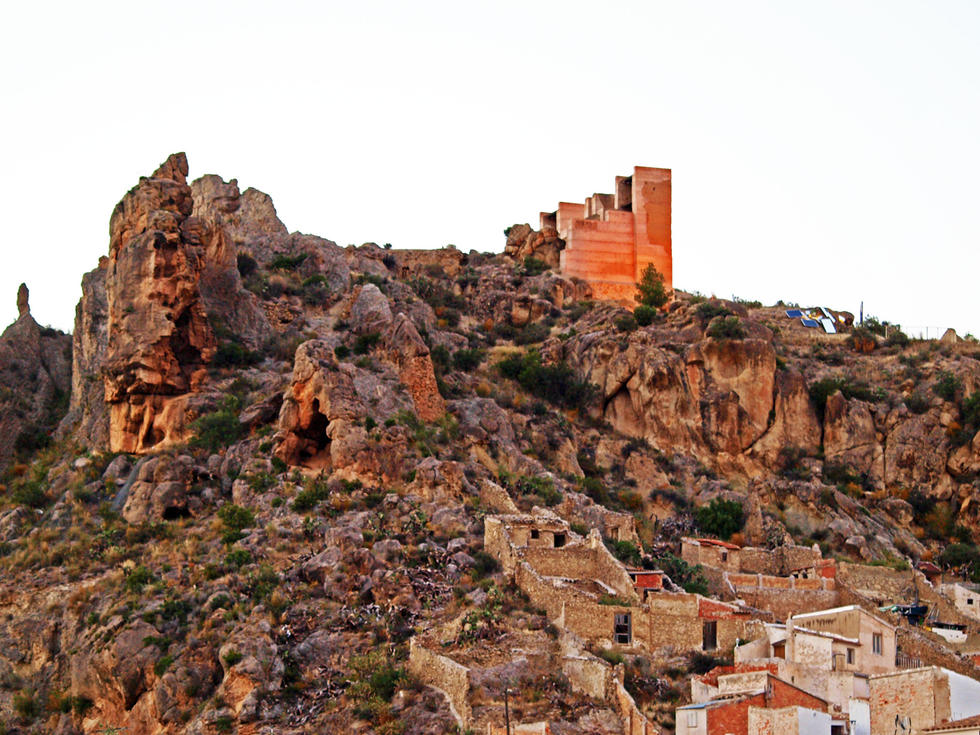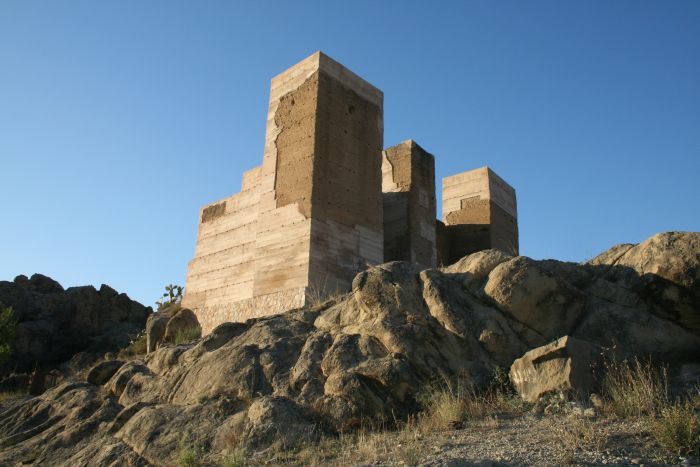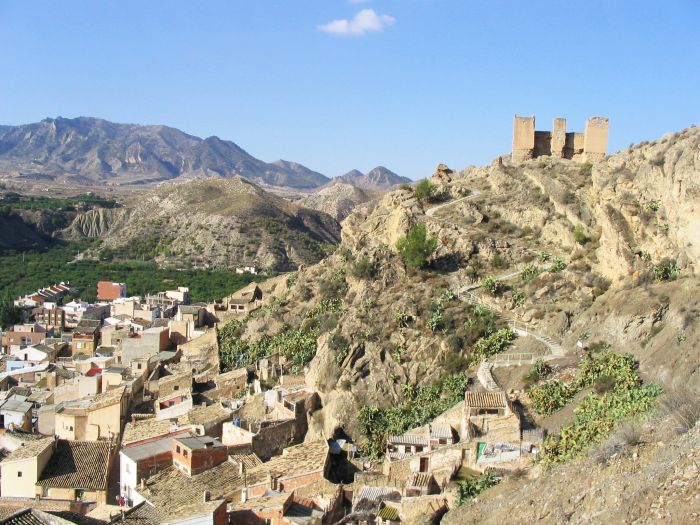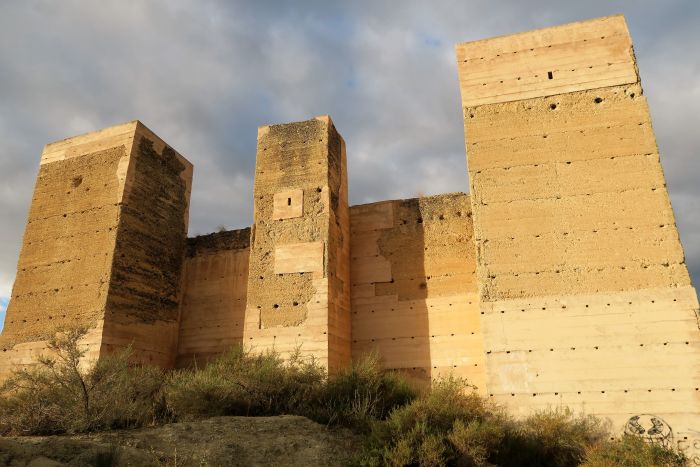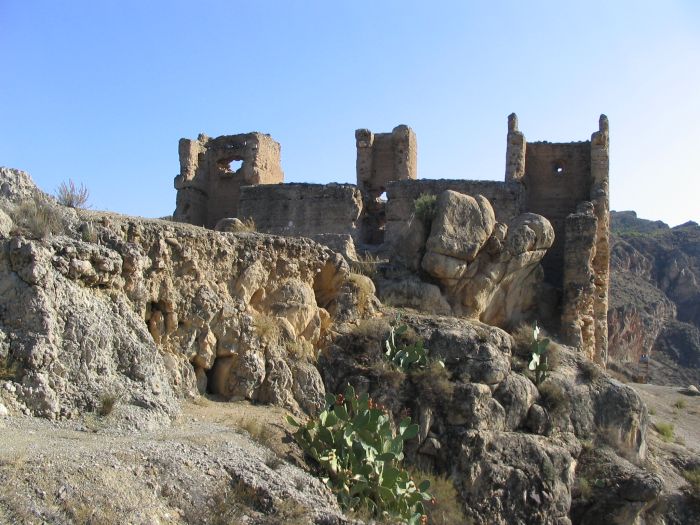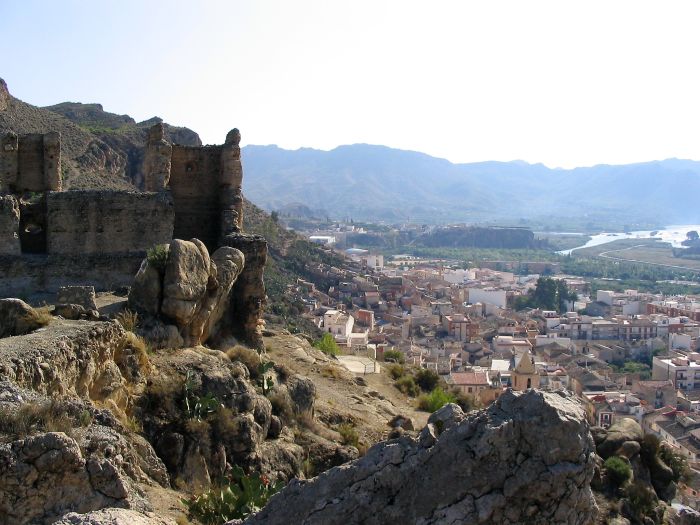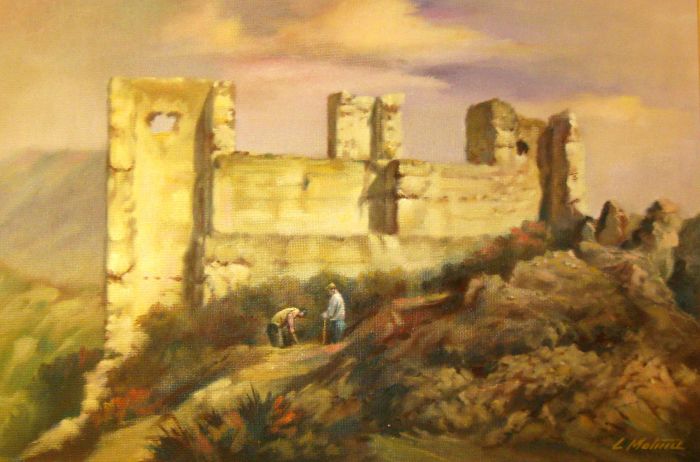Built on the Peña Negra de la Sierra del Solán, at an altitude of 556 m and overlooking the town centre, stands this castle built in the 12th century by the Muslims.
During the 13th century, the rebellion of Ibn Yusuf in Hud against the Almohads took place in this area. Negra, later called Blanca, suffered the clashes between the rulers of the region.
In 1285, Sancho IV, King of Castile, gave the towns and villages of the Ricote Valley, including Negra, to the Order of Santiago. This order improved the yield of the land and converted the Mudejars from Blanca to Christianity.
The castle was used as a watchtower and a refuge for the inhabitants of the neighbouring farmsteads in times of instability.
It was restored between 2003 and 2006.
The castle, which had become the symbol of the lordly power of the order over the valley and its inhabitants, was to be the scene of a resounding act of arms in the mid-15th century, in the context of the Murcian civil war and the clashes between the adelantado Don Pedro Fajardo and his close relative Don Alonso Fajardo "el Bravo". Thus, in 1448, a military action was directed against the fortress in which some pyrotechnic artillery devices were used, fuelled with eight arrobas of gunpowder bought in Orihuela.
Architecture
The most outstanding remains of the fortified complex are made up of three towers linked by two curtains where the cube in the centre is smaller than its flanking towers. This system enclosed the enclosure on one of its sides, and inside it there is a possible cistern set into the rock. From these structures we can see the beginnings of a barely preserved wall, which gives it an irregularly rectangular plan with the longest sides extending northeast-southwest.
The preserved remains, which are clearly visible in these three towers, were built with tápiales. Also still visible are the mechinales that housed the planks that formed the modules of the construction of the wall, which is approximately 90 cm thick. According to Alonso Navarro, the towers may have reached a height of twelve metres, and show signs of having had two bodies and a crenellated terrace. They also have certain openings at the top, which may have been Saeteras.
Other remains
To the east of the fortification, on the highest side of the hill, there are also remains of constructions that may indicate a defensive construction from a chronological period prior to the one preserved today.


